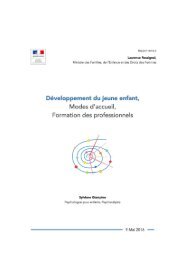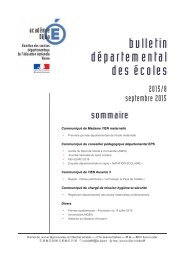agrl_innovations_in_ssa.pdf?utm_content=buffercb41d&utm_medium=social&utm_source=twitter
agrl_innovations_in_ssa.pdf?utm_content=buffercb41d&utm_medium=social&utm_source=twitter
agrl_innovations_in_ssa.pdf?utm_content=buffercb41d&utm_medium=social&utm_source=twitter
Create successful ePaper yourself
Turn your PDF publications into a flip-book with our unique Google optimized e-Paper software.
SCFCU success is based on vertical <strong>in</strong>tegration through: producer–buyer l<strong>in</strong>kages, direct export<br />
of members’ coffee, provision of warehouse services, and provision of sav<strong>in</strong>g and credit<br />
services for members. Coffee quality has been improved by education and tra<strong>in</strong><strong>in</strong>g to ensure<br />
quality production and process<strong>in</strong>g from seedl<strong>in</strong>g production to export, with SCFCU committed<br />
at every step <strong>in</strong> the cha<strong>in</strong>.<br />
Emerg<strong>in</strong>g or unresolved challenges. Production problems <strong>in</strong>clud<strong>in</strong>g pests and diseases,<br />
especially coffee wilt disease affects both yield and quality and requires ongo<strong>in</strong>g research and<br />
improved management practices. Although the volume of coffee exports and its quality is high,<br />
coffee sold locally is often of lower quality.<br />
The use by Ethiopia of a number of coffee trademarks requires resolution with <strong>in</strong>ternational<br />
corporations.<br />
Lessons learned for scal<strong>in</strong>g up. Vertical <strong>in</strong>tegration along the value cha<strong>in</strong> has ensured that<br />
producers obta<strong>in</strong> a fair share of the f<strong>in</strong>al value. SCFCU <strong>in</strong>volvement <strong>in</strong> production, process<strong>in</strong>g<br />
and market<strong>in</strong>g has ensured good quality at reasonable prices with the whole sector be<strong>in</strong>g<br />
owned and managed by farmers and their employees.<br />
Kenya’s dairy sector<br />
The dairy <strong>in</strong>dustry <strong>in</strong> Kenya is largely based largely on <strong>in</strong>tensive smallholder production<br />
supported by free-market process<strong>in</strong>g, transport and market<strong>in</strong>g. Technologies that have<br />
supported growth of the <strong>in</strong>dustry <strong>in</strong>clude improved breeds, zero-or semi-zero graz<strong>in</strong>g<br />
and feed<strong>in</strong>g regimes, and market liberalisation that enabled smallholders to participate<br />
<strong>in</strong> formal milk markets. The <strong>in</strong>dustry evolved from an <strong>in</strong>itially open market system <strong>in</strong><br />
the first half of the 20 th century to a near monopoly <strong>in</strong>dustry for much of the second<br />
half, before be<strong>in</strong>g liberalised dur<strong>in</strong>g the 1990s. Dur<strong>in</strong>g this latter period rapid upward<br />
trends <strong>in</strong> milk production have occurred with over 70 percent of farm households and<br />
600,000 smallholder farmers produc<strong>in</strong>g over 75 percent of national milk production.<br />
The country’s per capita dairy production is ranked the highest <strong>in</strong> sub-Saharan Africa<br />
(SSA). A broad array of support <strong>in</strong>stitutions, both public and private, has played key<br />
roles at different stages <strong>in</strong> the country’s dairy development. Government regulation has<br />
driven many of the key policy changes while donors, NGOs and the private sector have<br />
supported smallholder production and market<strong>in</strong>g <strong>in</strong>itiatives.<br />
Kenya was selected as a Dairy Centre of Excellence <strong>in</strong> 2011.<br />
Initial context. Kenya’s dairy <strong>in</strong>dustry emerged dur<strong>in</strong>g the first half of the 20 th century with<br />
the <strong>in</strong>troduction of improved breeds of cattle by white settlers. At that time dairy production<br />
was ma<strong>in</strong>ly a large-scale commercial farmer activity supported by public sector quarant<strong>in</strong>e<br />
laws, veter<strong>in</strong>ary and artificial <strong>in</strong>sem<strong>in</strong>ation (AI) services. The dairy <strong>in</strong>dustry evolved from a free<br />
market dur<strong>in</strong>g the first half of the 20 th century to a monopolistic and f<strong>in</strong>ally a liberalised <strong>in</strong>dustry<br />
from 1992 (EPZA, 2005). The drivers of <strong>in</strong>novation <strong>in</strong> the dairy <strong>in</strong>dustry have been multifaceted,<br />
24 Agricultural Innovation <strong>in</strong> Sub-Saharan Africa






